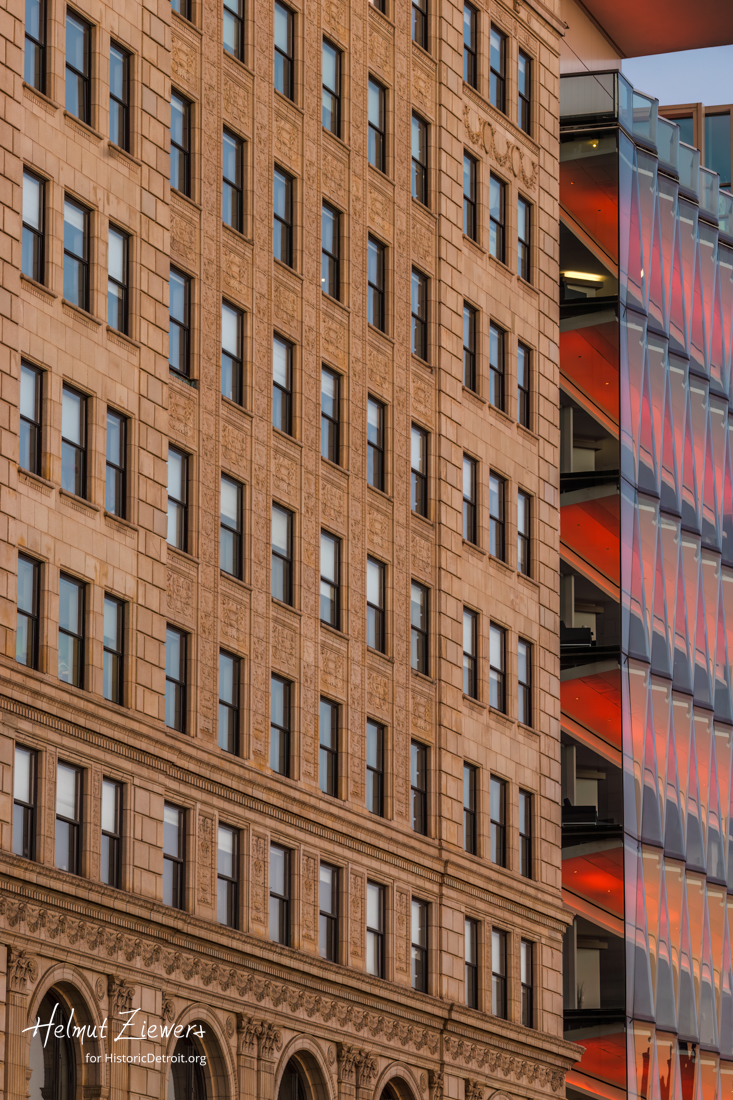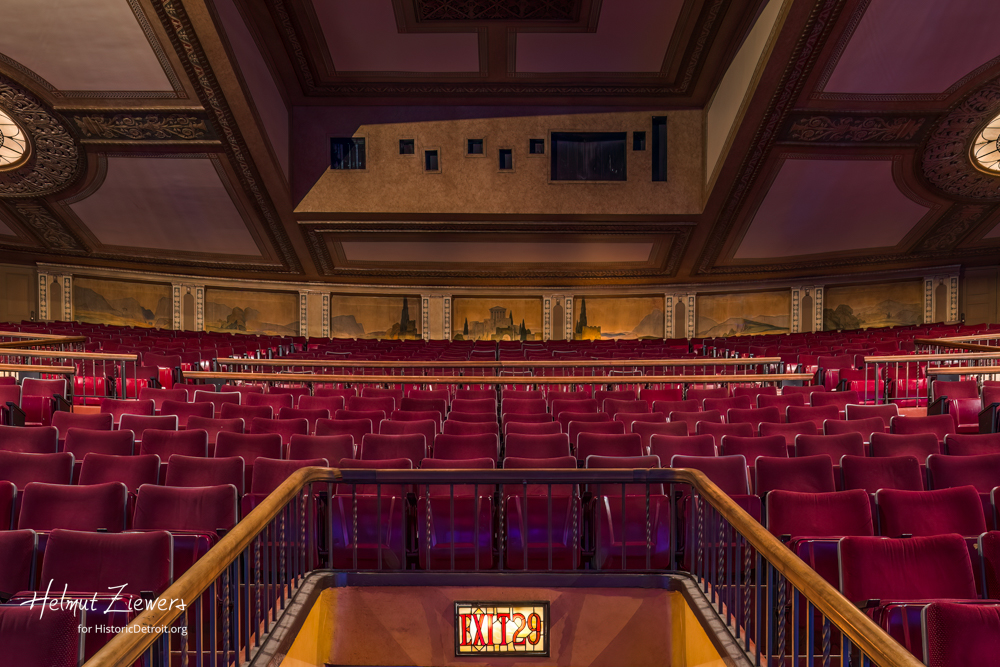Fillmore Detroit - Photos
Fillmore Detroit

The Fillmore auditorium as seen from the balcony in 2023. During the 2018 renovation, they brightened it up color wise. Previous green accent colors were replaced with an ivory color. The dome's dominating presence is literally the crowning masterpiece of this beautiful structure.

The "facelift" the theater received in 2018 is nothing short of amazing. The real "whoa" factor comes inside the main auditorium, where the grand domed ceiling had been deep-cleaned and meticulously repainted for the first time since the C. Howard Crane-designed venue opened as the State Theater in 1925.

The Fillmore Theater main entrance as seen from Woodward Avenue in Nov. 2022. The new Marquee was a controversial subject initially but people seem to have gotten used to it.

Even though somewhat contemporary, the fact that individual bulbs were used, gives it that 50's feel.

Old and new facade. Alley between the Fillmore Theatre Building and new Little Ceasars Headquarters

A view at the the barrel vaulted Grand Foyer from the second floor. The Corinthian columns and side walls, as well as all the stained glass doors to the outside and to the Rotunda Lobby, were beautifully restored to their 1925 original look.

The Fillmore main staircase going up to the second floor of the Grand Foyer.

The Fillmore auditorium during a movie premiere in Nov. 2022.

Rotunda lobby area with the double staircase up to the mezzanine level.

Another view at the Rotunda Lobby and the chandelier that was added during renovations in 2018.

Sitting area on the second floor

As you walk down memory lane, catch a glimpse of the infamous rock poster wall featuring a small sampling of the endless artists who have graced this magnificent stage.

The Fillmore Theater exterior as seen from Woodward Avenue

The Fillmore Detroit is a beautiful historic venue located in the heart of Detroit's entertainment district.

The 12-story building housing the Fillmore is known as the Francis Palms Building. When the theater opened up in 1925, the theater was called the State, then changed in 1937 to be the Palms-State, then in 1949 it became the Palms, then in 1982 it became the State once again, and in 2007 it became the Fillmore.

The building was listed on the National Register of Historic Places in 1982.

The Fillmore as seen on a stormy morning from Comerica Park - nestled in between the new, glass-clad Huntington tower and the new Little Caesars Global Resource Center.

Great view at the stage from the Mezzanine seating areas.

Long gone painted canvas side panels were replaced with colorful ones with bucolic Tuscan scenes during the 2018 renovation.

The Fillmore features nine "signature" chandeliers, three on either of the side walls of the auditorium, and three in the Rotunda Lobby.

A vantage point overlooking three floors of the barrel vaulted Grand Foyer.

The only part of the auditorium that was restored a long time ago are the proscenium arch framing the stage along with the two plaster knights in armor on either side.

At some point, main floor seats were removed and stored away with seating reduced from 1500 down to 700. The slope was terraced to multi levels for a dance floor and several higher levels of bistro style seating.

The bar received a new wooden counter during the 2018 renovation

The view at the stage from a premium seating area

A view at the second and third floor balcony seating

The back wall of the balcony is painted with beautiful landscape scenes.

A view along the mezzanine shows the spacious and comfortable seating area below the main balcony.

The overhead lighting adds to the luxury of the spacious seating area.

This view across the main balcony shows the width and height of the auditorium.